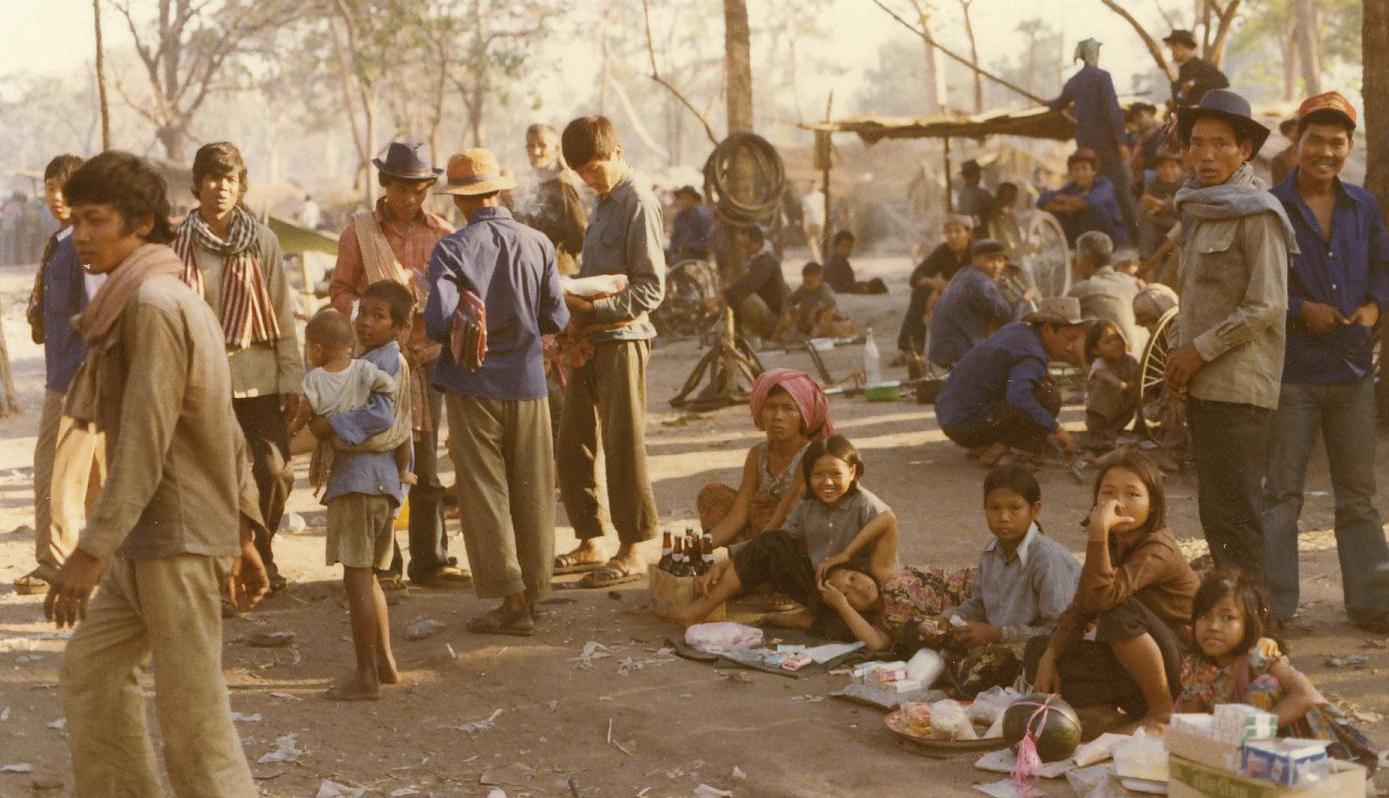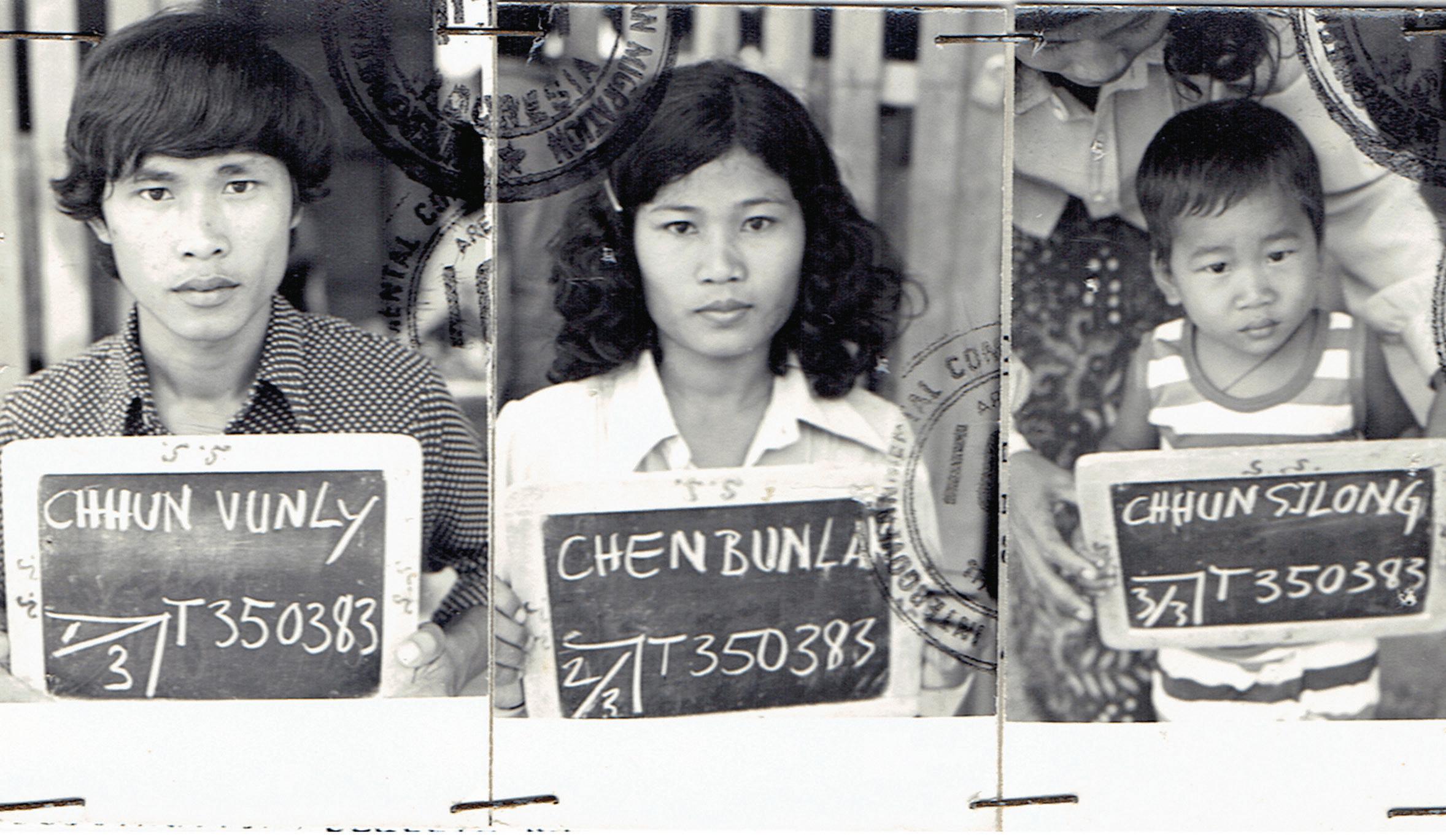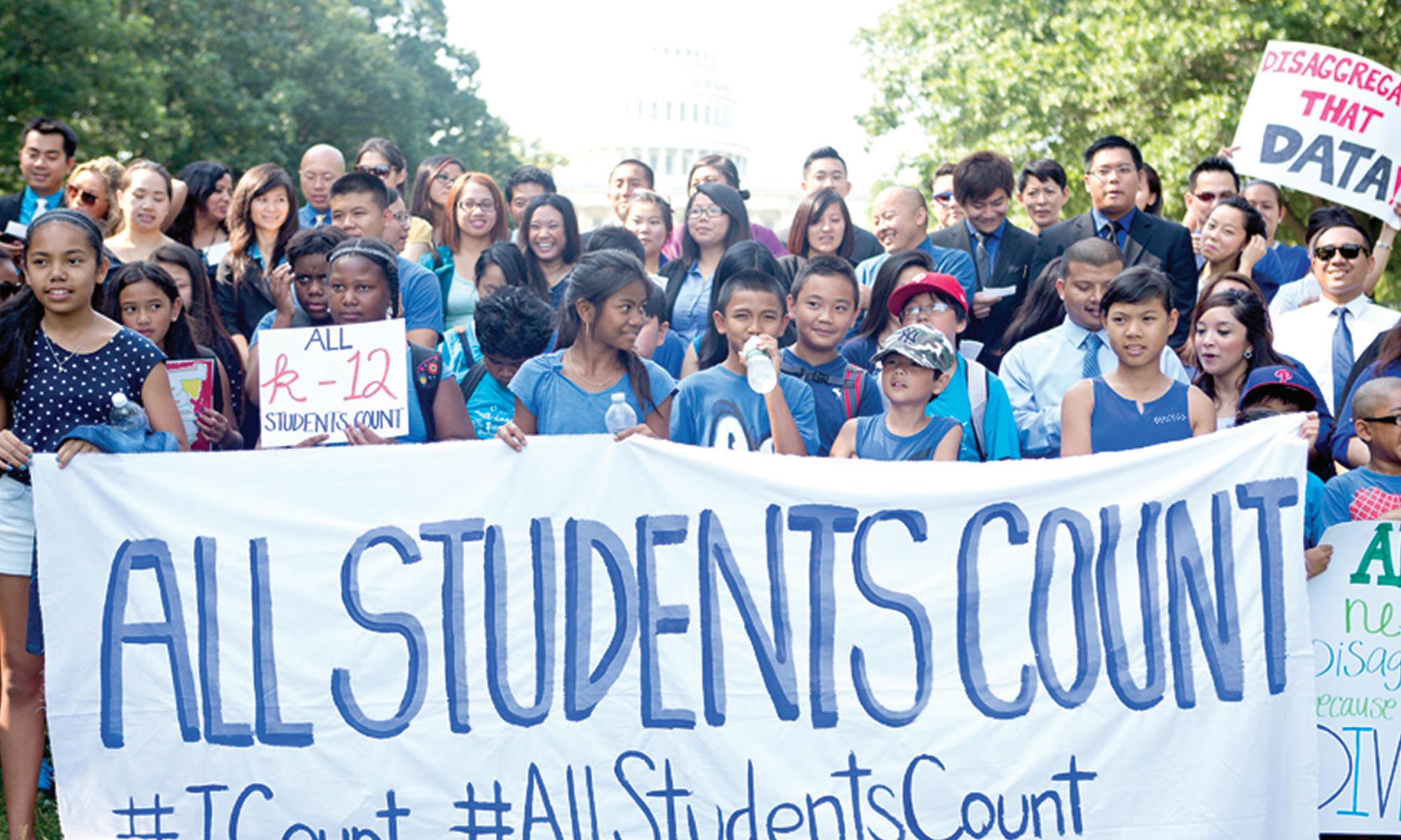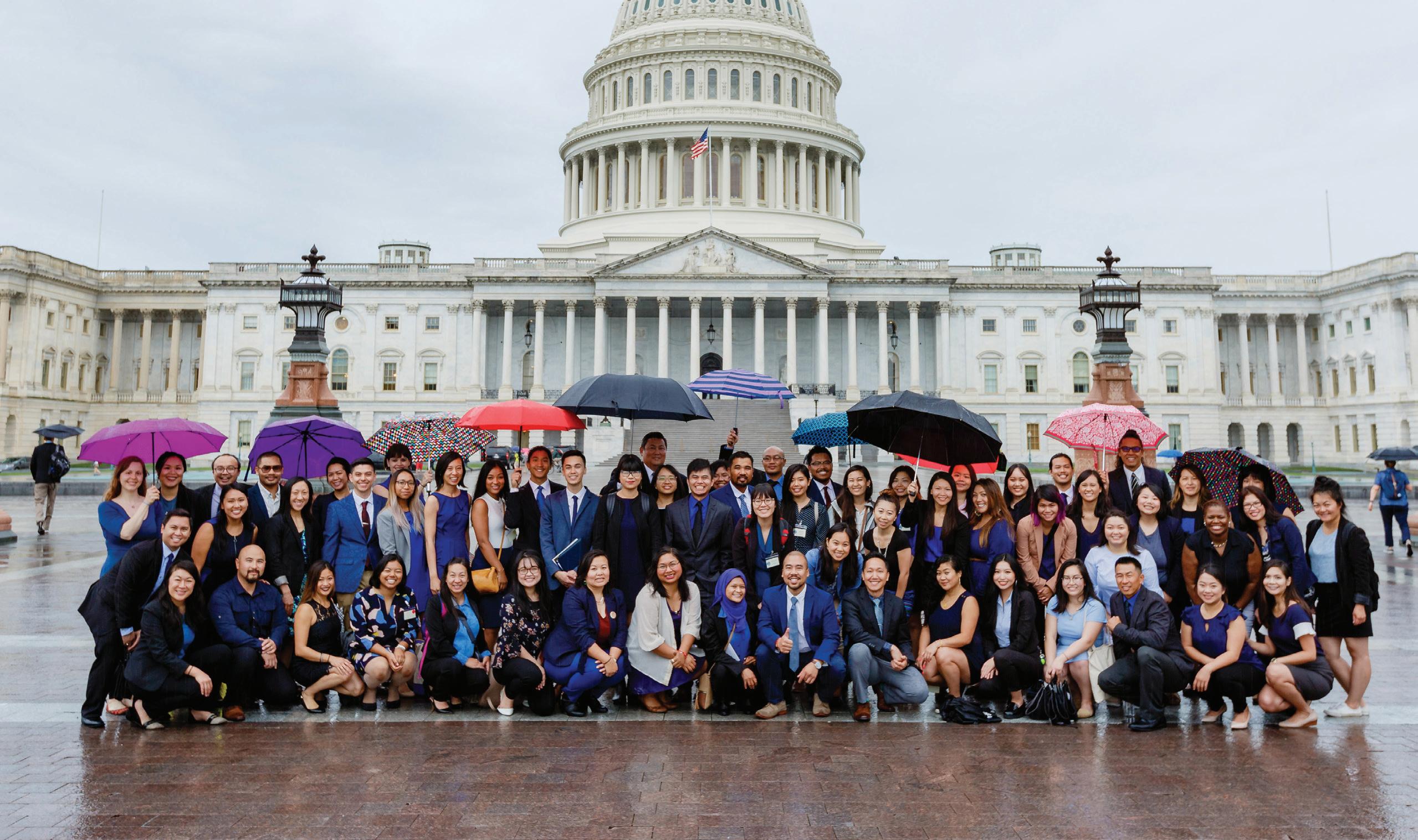
10 minute read
Introduction
SOUTHEAST ASIAN AMERICANS comprise one of the newest communities to be added to the American narrative, and one of the newest communities to be added to the Asian American experience. While Chinese Americans can date their ancestry back to the early 1800s, the story of mass migration of Southeast Asians to the United States started in the 1970s in the aftermath of the U.S. occupation of Southeast Asia during the ruthless Khmer Rouge genocide, bombings in Laos, and Vietnam War. Together these wars claimed millions of lives between 1955 and 1975, including innocent men, women, and children. Among those harmed were the 2 million victims of the Khmer Rouge genocide, and the tens of thousands of people who were victims of the mass bombing of Laos—the most heavily bombed country per capita in world history. Millions more were affected by Agent Orange, a herbicide deployed in Southeast Asia that is now linked to certain cancers.
The relationship between the U.S. and the people of Cambodia, Laos, and Vietnam began decades before Southeast Asians arrived in America, as the U.S. government had been heavily involved in these countries to combat the spread of communism. Many Southeast Asians worked alongside the U.S. in these efforts to fight for democracy within their own countries. For example, Vietnamese refugees worked with the U.S. government during the Vietnam War as translators and civil servants; Khmer refugees assisted the U.S. military during its occupation of Cambodia; and the U.S. Central Intelligence Agency recruited and trained Lao and Hmong soldiers to serve as guerrilla fighters in the Secret War in Laos. When the U.S. withdrew and these countries fell to communist powers,
Advertisement

the U.S. failed to implement promised contingency plans to protect those who had aided the U.S., leaving hundreds of thousands of people to fend for themselves as targets of political persecution. Even after the wars ended, violence and fear of persecution forced refugees to make treacherous escapes across borders and out onto the open sea to refugee camps, where they awaited resettlement. This eventually led to the largest mass resettlement of refugees in America’s history—over 1.1 million in a span of three decades.
THE EN MASSE RESETTLEMENT of Southeast Asian refugees started in 1975. Due to the lack of a unified national system of refugee resettlement at the time, Southeast Asians were resettled ad hoc and scattered across isolated areas in the U.S., where voluntary organizations—many sectarian ones—assisted the State Department with refugee resettlement. The U.S. volunteer organizations charged with resettling refugees were not provided clear instructions or expectations on how to assist Southeast Asian refugees, aside from greeting them upon arrival, matching them with sponsors, and in some cases, providing one-time cash assistance. Without an understanding of the unique needs and circumstances that these refugees had endured as a result of trauma from the war and its aftermath, they were treated as voluntary migrants who were expected to achieve economic self-sufficiency and independence very quickly.
To respond to these crises, founders of the Southeast Asia Resource Action Center (SEARAC) advocated for the passage of the Refugee Resettlement Act of 1980 to increase refugee admissions from Southeast Asia; establish the Office of Refugee Resettlement, the country’s first national resettlement infrastructure; and create “mutual assistance associations,” or “MAAs.” MAAs were created to respond to the lack of understanding by many mainstream organizations of the needs of refugees. These organizations—led by communities who came from
these experiences—were provided federal funding to meet the cultural and language needs of their own refugee community. However, many challenges persisted as refugees were met with not just hostility and racism but also extreme blight. This left many refugees without long-term support in poverty-stricken neighborhoods plagued by gang violence, racial tension, and failing schools.
Growing from these traumatic experiences, Southeast Asian Americans (SEAA) today comprise one of the quickest-growing communities within the larger Asian American community. SEAA are a vibrant, diverse, and growing community of refugees, the children of refugees, people sponsored by refugee families, and more recently arrived immigrants who have come to the U.S. on family-based and employment visas. Yet, even decades after initial resettlement, institutional inequities still impact SEAA communities as communities that have been sorely abandoned, ignored, or misunderstood. Sadly, the American narrative has quickly excluded the refugee legacy that created these unique challenges for SEAA. Instead of the U.S. upholding American responsibility for the world’s largest refugee crisis created by American political forces, the SEAA community has instead been replaced, overlooked, and masked behind the broader Asian American “model minority” myth that all Asian Americans are thriving compared to other communities of color. As a result of this stereotype, tremendous socioeconomic challenges that affect the SEAA community remain hidden. This stereotype is also reinforced by data policies that lump, or aggregate, all SEAA under the broader Asian American race category. Disaggregated data that allow us to see how specific ethnic groups are doing within the larger Asian American umbrella are critical to revealing barriers and uplifting necessary solutions to improve socioeconomic outcomes for this community. “Initially because the war in Vietnam was not popular in the U.S., when refugees came from Vietnam, Cambodia, and Laos, they were met with hostility. They were not welcome at all. That was a big challenge for my work at SEARAC—how to convince the public opinion. Our major job was public education and advocacy to work with Congress and media to educate them about the issues, and why the U.S. should receive us as former allies of the U.S. We fought together.” DR. LE XUAN KHOA SEARAC’s second executive director
The last three years under the Trump administration have resulted in some of the most blatant and hateful attacks on immigrant and refugee families across the country. These include escalated detention and deportation of community members who long ago served their sentences; limiting the ability of low-income families to access critical government services to feed and nourish their children; threatening health insurance coverage and health access to vulnerable community members; undermining education programs and services that promote equitable outcomes, college access, and
affordability; and attempting to weaken immigrant and refugee political power and access to resources by creating barriers to a complete count of entire communities through the census.
We have also seen a rising movement opposing the collection and reporting of disaggregated data led by a small fraction of conservative Chinese communities that are misinformed, misled, and used as tools by affirmative action opponents in the U.S. This vocal minority has been at the forefront of attempting to dismantle state-level data disaggregation policies while seeking to influence the national debate on affirmative action by appropriating civil rights messaging on education equity for unjust causes. Using the Asian American, Native Hawaiian and Pacific Islander (AANHPI) community as a wedge group to discredit equity-minded policies, such as data disaggregation and race conscious admissions policies, hurts not only SEAA but all students of color. Now is the time to combat fear and misinformation and highlight the incredible diversity of the AANHPI community with accurate details on the needs and assets in the SEAA community captured only through the collection and reporting of disaggregated data. Only by seeing our needs and challenges through accurate data can we advocate fully for not just our visibility but our community’s civil rights as the largest community of refugees ever to be resettled in America. Armed with our community’s data, we will build our community’s self-determination from our legacy of refugee resilience to shape a new, multicultural, equitable democracy and America.
SEARAC AND ADVANCING JUSTICE–LA were founded on a legacy of advancing the civil rights and human dignity of Asian American communities. In order to carry out our respective missions in ways that do justice for the communities we serve, our advocacy must be informed by disaggregated data that highlight the unique needs, disparities, and assets for each of the different ethnic groups that make up the AANHPI category. AANHPI are not a monolith. Together this community is made up of people of nearly 50 ethnicities who speak more than a hundred languages. However, when looking at data in aggregate, we are often labeled as the “model minority” and used as a wedge to undermine policies that promote the civil rights of other communities of color.
Given this context, Southeast Asian American Journeys: A National Snapshot of Our Communities is a resource to amplify the SEAA story through disaggregated data to highlight the pressing issues and resilience of this community today. For SEARAC, SEAA is a political identity that comes from the shared experience of people who came to the U.S. as refugees from Cambodia, Laos, and Vietnam in the aftermath of the U.S. occupation in Southeast Asia. This report presents data that disaggregate Southeast Asian Americans from the Asian American category. However, due to data availability, disaggregation of data in this report is limited to Cambodian, Hmong, Laotian, and Vietnamese American as distinct ethnic groups, and the combination of these four ethnic groups as a distinct Southeast Asian American category. It seeks to dispel “model minority” myths by showing that many in our communities have invisible needs and require access to culturally and linguistically sensitive and appropriate services.
This report provides, in addition to general demographic data, data highlighting some critical issues facing SEAA, such as resettlement, immigration, education, health, economic justice/housing, and civic engagement. Although a large portion of the report features national data, it also highlights a few states with sizable populations of SEAA; therefore, California, Massachusetts, Minnesota, Texas, and Washington are covered in greater depth in this report. We recognize this as a limitation of this report, given that the SEAA community is a growing community in other states
across the U.S., but it is our hope this preliminary information inspires further study in other states across the country. Much of the data come from the U.S. Census Bureau, including the Decennial Census and the American Community Survey. Because census data are limited, data from other sources are also used.
We hope that this report will serve as tool to empower communities to enact change—to call for policies that protect our community’s rights, to invest in the needs and resilience of our community, and to deepen partnerships across sectors to build equity for the SEAA community. While the topics covered here are not meant to be an exhaustive list of all issues that matter to the SEAA community, we believe they are an important first step to sharing the overall state of SEAA today with:
• Policy makers, government officials, and government agencies—to inform the creation of culturally relevant policy interventions that lead to equitable outcomes for SEAA families.
• Foundations and donors—to inform the need for long-term resources and investments to support a thriving SEAA community.
• Service providers—to inform the development and application of culturally sensitive services as well as intentional investment in building a workforce pathway composed of members from impacted SEAA communities.
• Community members and the general public—to inform community organizing, education, mobilization, and community building around a broader SEAA political identity.

THANK YOU
WE WOULD LIKE TO THANK EVERYONE who contributed to this report, including coauthors SEARAC staff (Katrina Dizon Mariategue and Quyen Dinh) and Asian Americans Advancing Justice–Los Angeles staff (June Lim and Shelly Chen). This project is a result of countless hours of collaboration with many of our SEAA community partners, leaders, advocates, and service providers across the country who shared their time, expertise, and experiences to bring this report to life. We want to especially acknowledge our committee of stakeholders who helped to inform our data collection process, policy recommendations, and contributed their voices: Sina Sam, Sovanna Pouv, Phitsamay Uy, Channapha Khamvongsa, Vattana Peong, Susana Sngiem, Jannette Diep, Lily Liemthongsamout, Tung Nguyen, Bao Vang, Quyen Vuong, Thu Quach, Pao Yang, and Ay Saechao. With deep gratitude, we also thank community members who shared their stories and photos for this report: Maly Phommavong, Phi Nguyen, Thanh Quach, Nghiep Ke Lam, Silong Chhun, the Hmong Cultural Center of Butte County, Sunny Chanthanouvuong, KaYing Yang and countless others whose narratives in past SEARAC campaigns, reports, and training programs helped to uplift the data presented. Thank you for bringing the stories from your communities to shape this project. We also extend our gratitude to the Wallace H. Coulter Foundation for making this report possible. The statements and recommendations expressed in this report are solely the responsibility of the authors.



